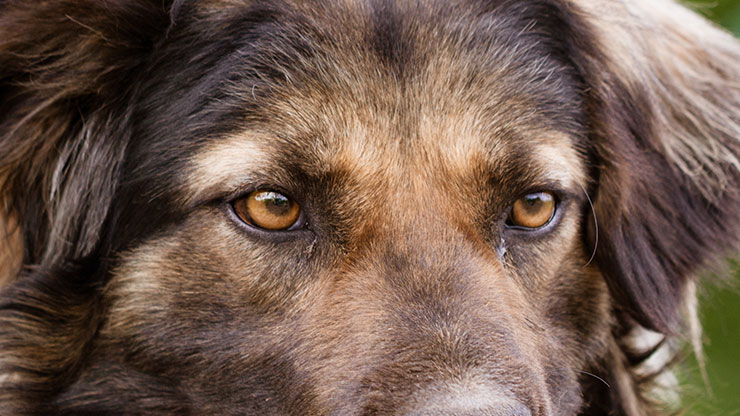
How Dogs See the World: Insights Into Canine Vision
Dogs often impress us with their keen senses. They can pick up on sounds that are inaudible to us and scents that we would never detect. But what about their vision? How do dogs perceive the world around them? In this article, we'll unravel the mysteries of canine vision and provide insights into how our faithful companions perceive the world.
Canine Vision Basics
To understand the canine vision, we must first delve into some biology. A dog's eye is structured similarly to a human's but with key differences. The two main components that play a big role in vision are rods and cones. Rods are sensitive to light and dark, enabling low-light vision, while cones help detect color.
Dogs have more rods than humans, which helps them see better in the dark. However, they have fewer cone cells, meaning they see fewer colors. Dogs also have a structure known as the tapetum lucidum that reflects light back through their retina and further enhances night vision. This structure gives dogs' eyes a glow when illuminated in the dark.
Color Perception in Dogs
One of the most common misconceptions about canine vision is that dogs see in black and white. This has been debunked by scientific research. Dogs do see color, but not in the same way humans do.
Humans have three types of cone cells, allowing us to see a wide spectrum of colors. In contrast, dogs only have two types of cone cells, meaning they see fewer colors. Their color vision can be compared to a human with red-green color blindness. This means dogs see shades of blue and yellow but cannot distinguish between red and green, which likely appear as shades of grey.

Visual Acuity and Field of View
Another aspect to consider when understanding how dogs see the world is visual acuity—the clarity of vision. In humans, normal visual acuity is 20/20. Dogs, however, have an average visual acuity of 20/75. This means that what humans can see clearly at 75. A dog must be at least 20 feet away to see just as clearly.
But it's about more than clarity. Dogs have been found to have a wider field of view than humans. Based on the breed and the individual dog's facial structure, a dog's field of view ranges from 240 to 270 degrees, while humans have an average field of view of about 180 degrees. This wider field of view helps dogs detect movement across a broad area—an advantage when hunting or avoiding danger.
Night Vision and Motion Detection
As we touched on earlier, dogs are superior to humans when it comes to night vision. A large number of rod cells and the presence of the tapetum lucidum help dogs see better in low-light conditions. This doesn't mean they can see in complete darkness, but they certainly have a night-time advantage.
Furthermore, dogs are exceptionally good at detecting motion. The evolution of dogs as hunters has equipped them with a keen ability to notice even slight movements. So, if a squirrel darts across your lawn, your dog will likely notice it before you do.
Depth and Distance Perception
While dogs are excellent at detecting motion, their depth and distance perception is less precise than that of humans. This is mainly due to their eyes being positioned more toward the sides of their head, leading to a more prominent blind spot directly in front of them.
However, by tilting their heads or moving around, dogs can overcome this limitation, and judge distances relatively well—skills evident when catching a frisbee in mid-air or navigating obstacles while chasing a ball.

Catering to Canine Vision: The Importance of Fencing
Given the nuances of canine vision, ensuring their living environment, particularly outdoor spaces, is well-suited to their visual capabilities is crucial. For dogs with perfect vision, physical fences serve as a clear boundary that they can easily see and recognize. However, these fences might be less effective for dogs with vision issues.
Technology has provided an innovative solution to these challenges: virtual or wireless dog fences. These systems use wireless communication and training techniques to keep your dog within a predefined area, usually your yard.
A Different Perspective
While dogs might not see the world in the same vibrant array of colors as we do or with the same clarity, their vision perfectly suits their needs as a species. They excel in night vision and motion detection, which are vital to their survival and development.
Ultimately, how dogs see the world is a testament to their unique evolutionary journey. Even though it's different from our human perspective, it's perfect for them. So, the next time your furry friend seems to see something you don't, remember that they're experiencing the world through a different, but no less fascinating, set of eyes.










